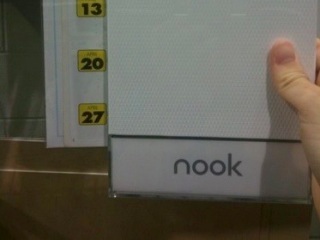
Trying to keep up with Kindle sales is like trying to figure out an algebraic equation. Amazon announced Monday morning that “sales of the new generation Kindle devices since their introduction have already surpassed total Kindle device sales from October through December 2009.”
Skyrocketing new-generation Kindle sales is big news, but it would help if I had any idea what total Kindle device sales from October through December 2009 were, or how much the new-generation Kindles have surpassed them. So far my equation looks like this: x + (y)x= z. So to figure out exactly how well new-generation Kindles are doing, all you have to do is solve for x, y, and z. (I apologize if that equation is not accurate. I was an English major in college.)
“It’s still October and we’ve already sold more Kindle devices since launch than we did during the entire fourth quarter of last year–astonishing because the fourth quarter is the busiest time of year on Amazon,” said senior vice president of Amazon Kindle, Steve Kessel, in the company’s press release. “Readers continue to choose Kindle for its all-new electronic ink screen with 50 percent higher contrast, readability in bright sunlight, long battery life of up to one month, light 8.5 ounce form, flexibility to read their books across all major LCD devices and platforms, and low $139 price. It’s clear that this is going to be the biggest holiday for Kindle yet—by far.”
The online book retailer added that Kindle e-book sales continue to dominate print sales, and in the last 30 days, e-book sales have beat out print sales (hardcover and paperback combined) for the top 10, 25, 100, and 1000 best-selling books on Amazon. Amazon sold more than three times as many Kindle books in the first nine months of 2010 as in the first nine months of 2009, and while the Association of American Publishers reports that e-book sales grew by 193% between January and August 2010, Amazon claims to have exceeded that rate.
Interestingly, the market for print books is also growing. “We view the continued growth of Amazon’s sales of physical books as evidence that the growth of eBook sales may create upheaval in the retail book market – pressuring sales at traditional booksellers, rather than meaningfully cannibalizing book sales at Amazon,” stated J.P. Morgan analysts in a report.
The boosted sales are due, no doubt, in large part to the massive drop in Kindle prices to as little as $139 (for the Wi-Fi only version), compared to Amazon’s first asking price of $399 when the Kindle was first launched in 2007. The Wi-Fi only Kindle is $10 cheaper than its Nook equivalent, and prices are expected to drop even further by the end of the year. In a July interview, Forrester Research analyst James McQuivey told The Reporter, “Anything that doesn’t have any kind of connectivity, like the Sony Pocket Reader, has to drop to $99 by the end of the year. Why would you buy that non-wireless device if you have the choice for the same or less money to buy a Wi-Fi-enabled Kindle?”
And so continues Amazon’s domination of the book market, which the company has gone to great lengths to secure—even going so far as to purchase e-books for their retail price from publishers and then selling them for less (as little as two-thirds of the purchase price), thereby sacrificing their own profits to take a larger market share. With such a single-minded goal, it’s little wonder that Kindle and e-book sales are outpacing print book sales as well as the e-book market as a whole.
Image source: amazon.com


















